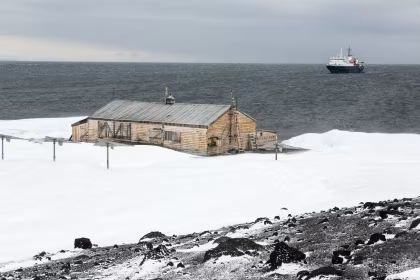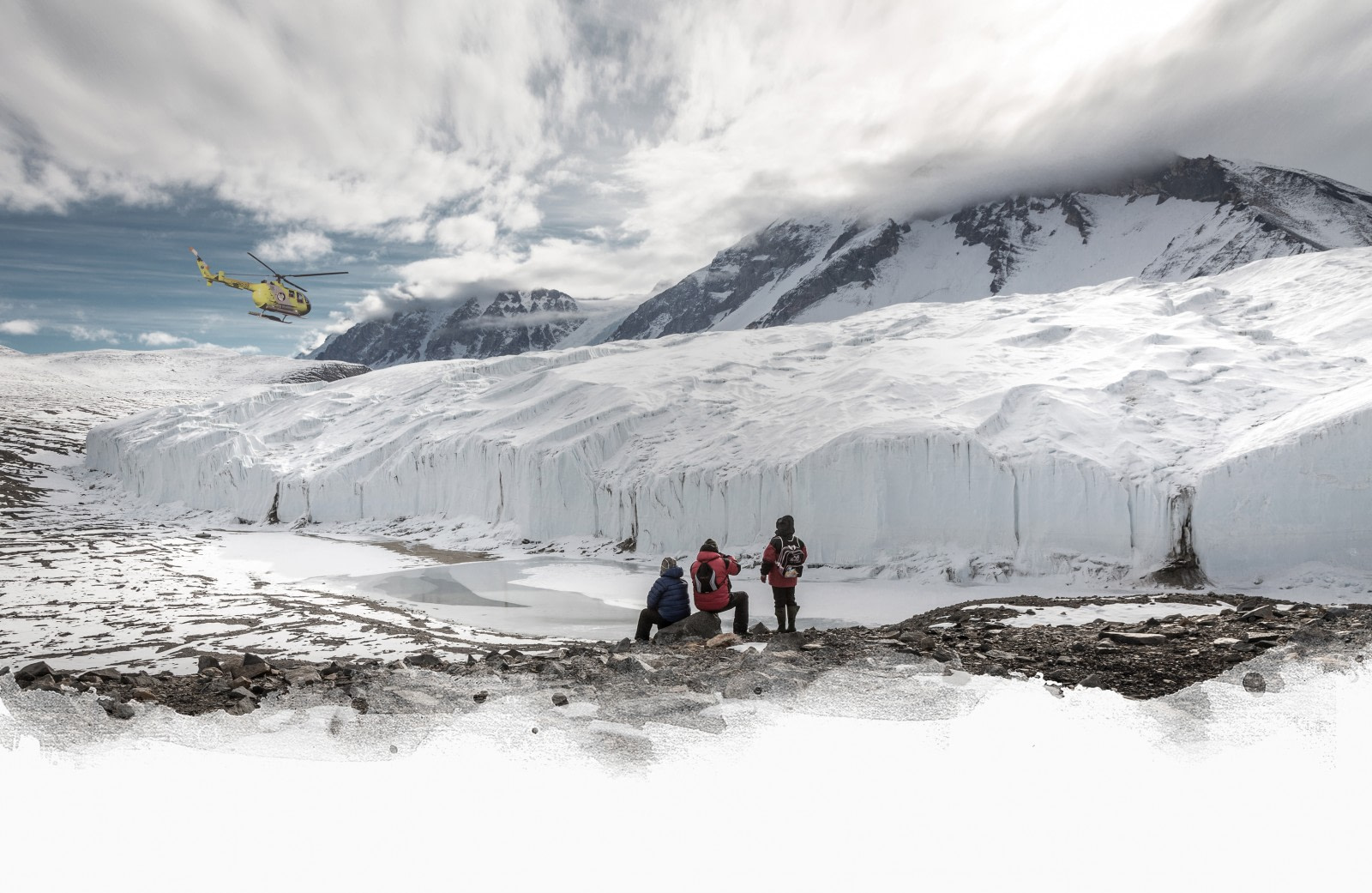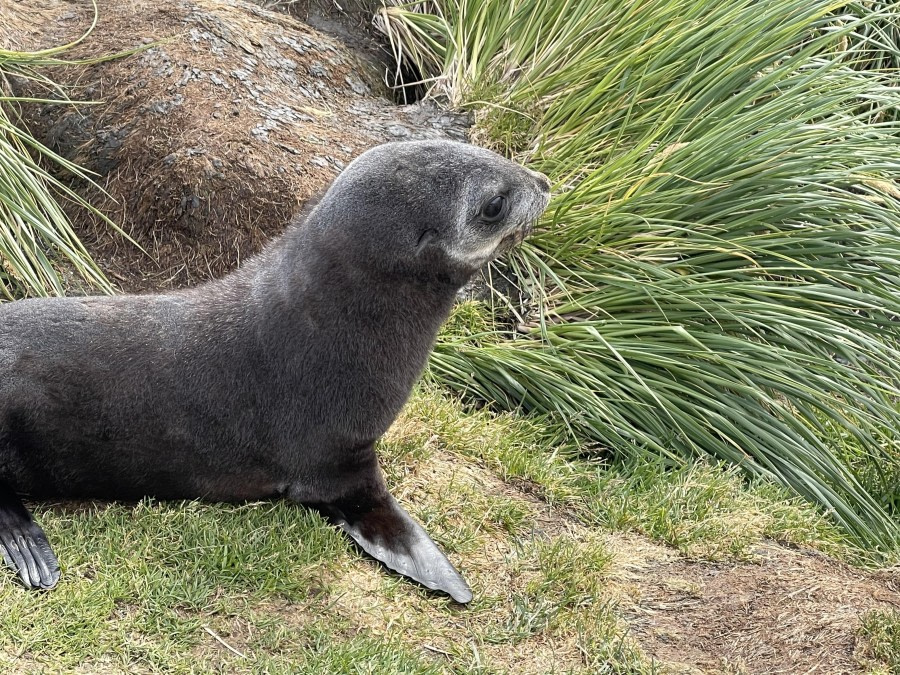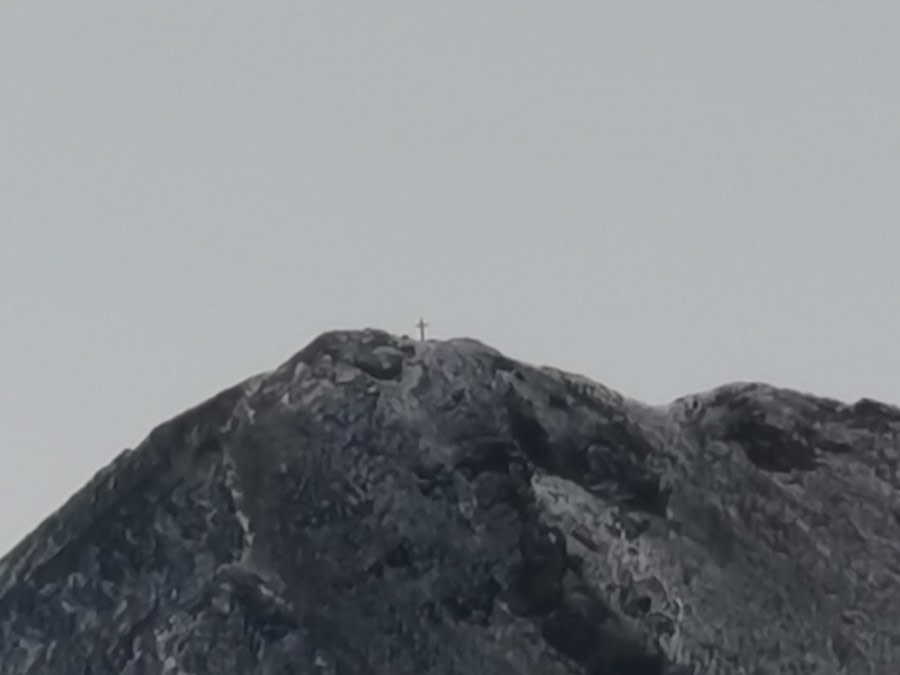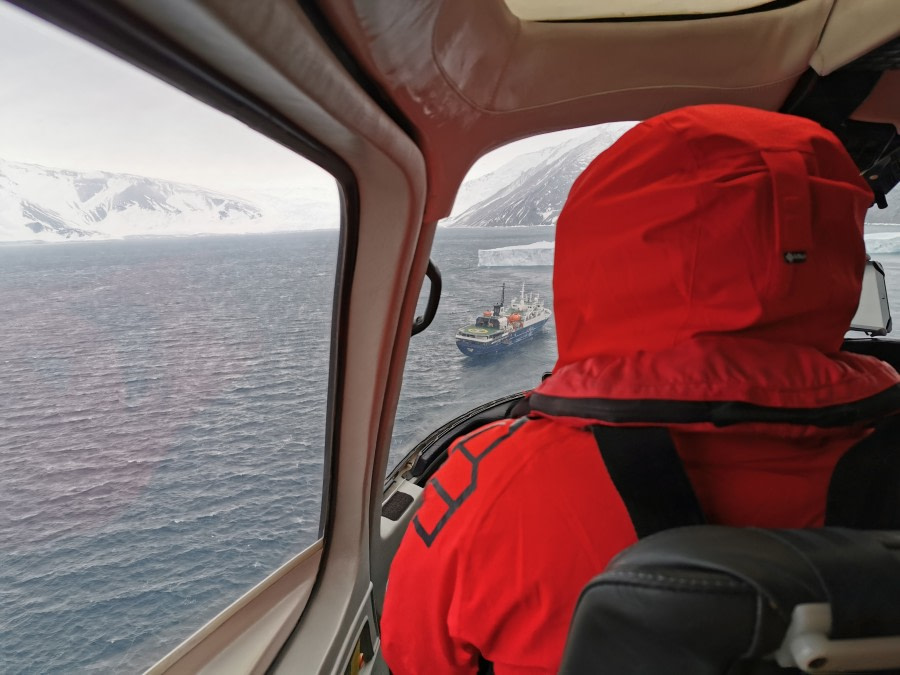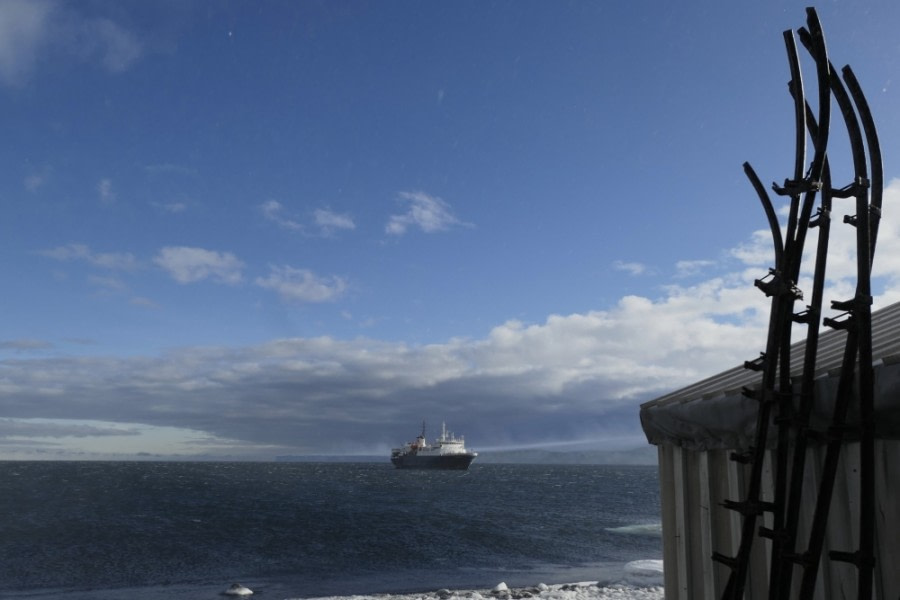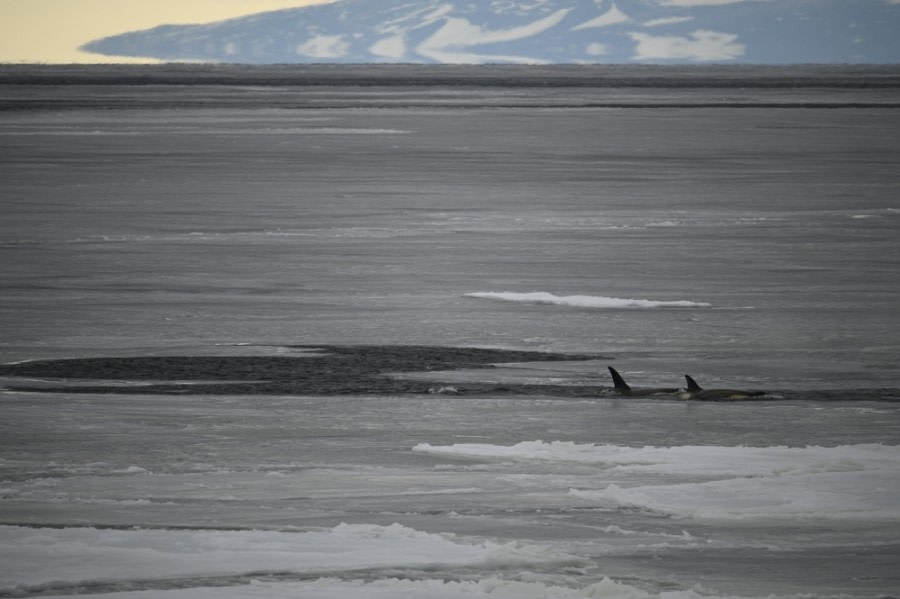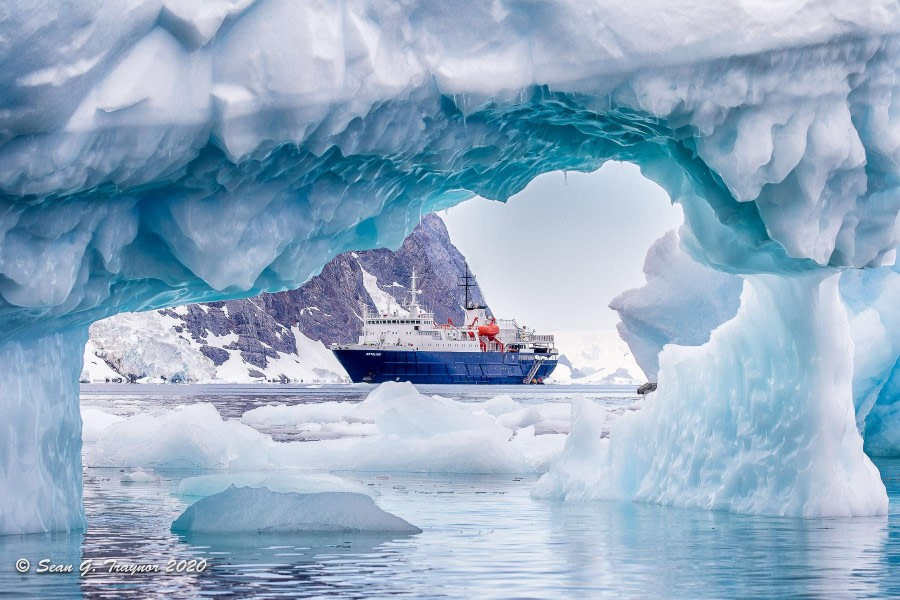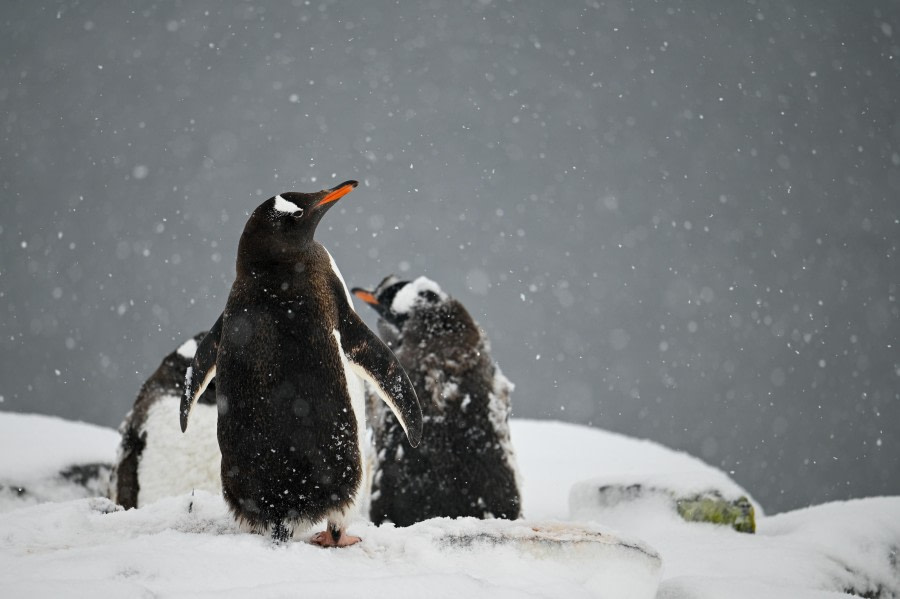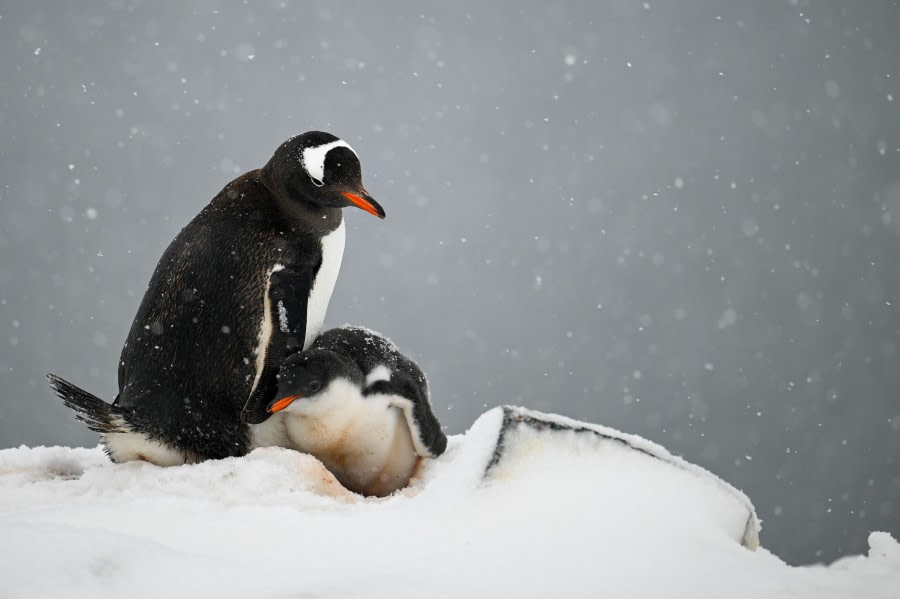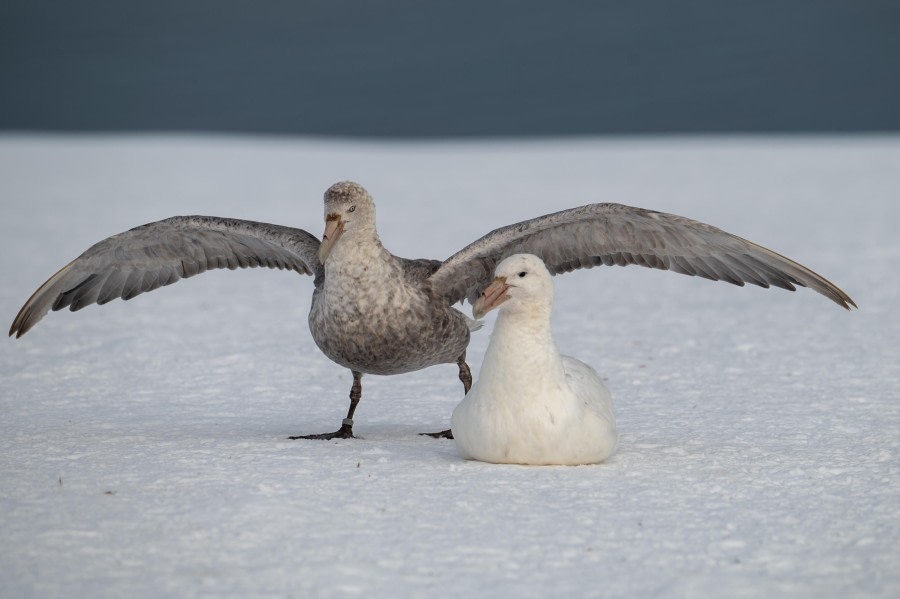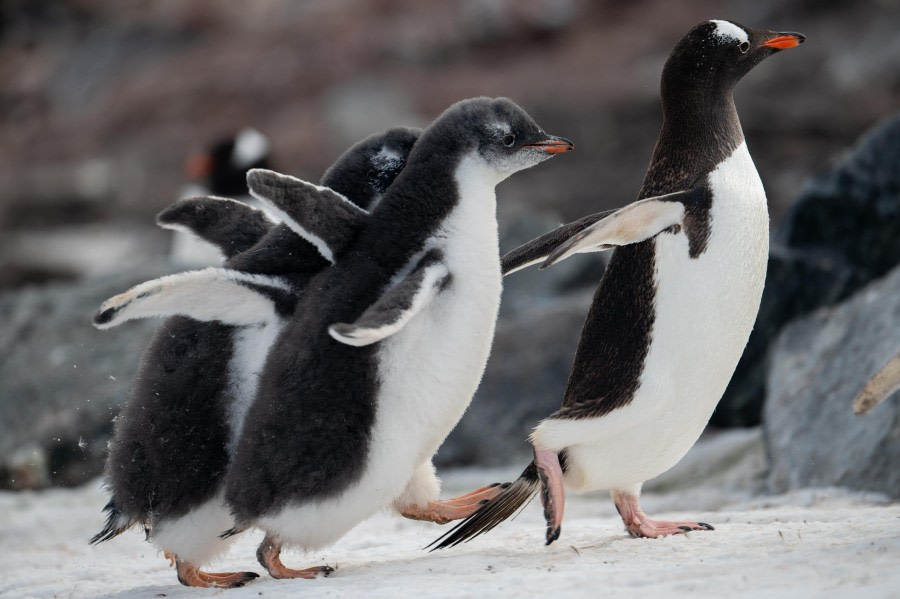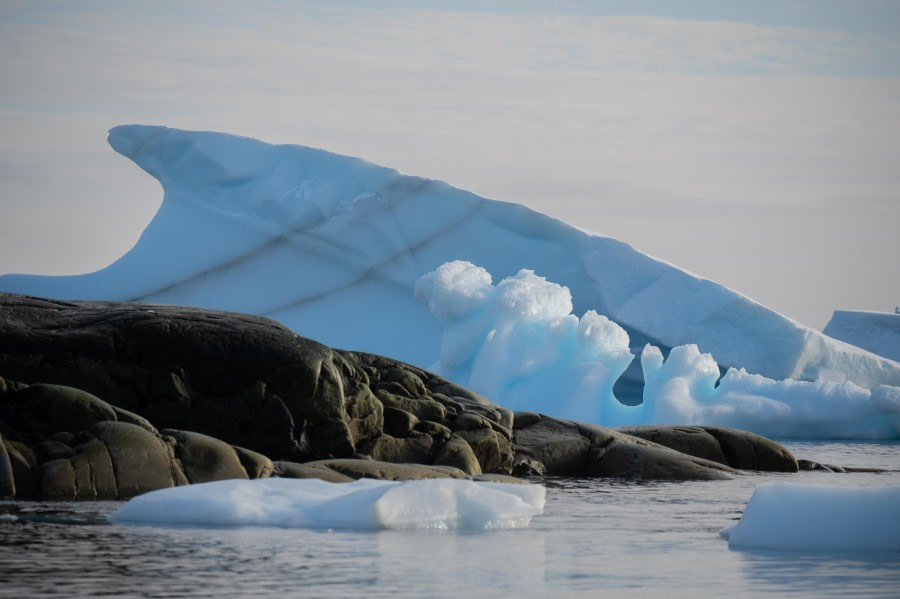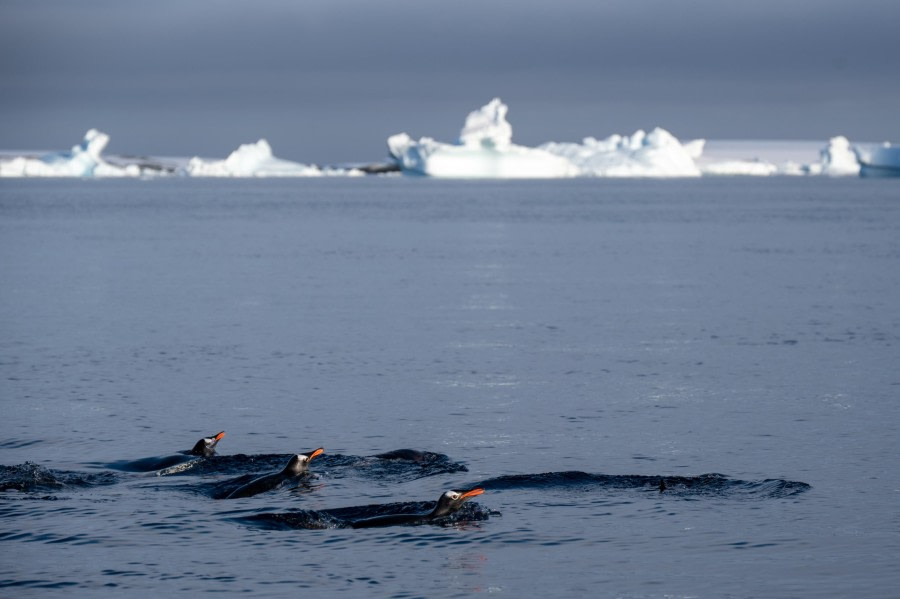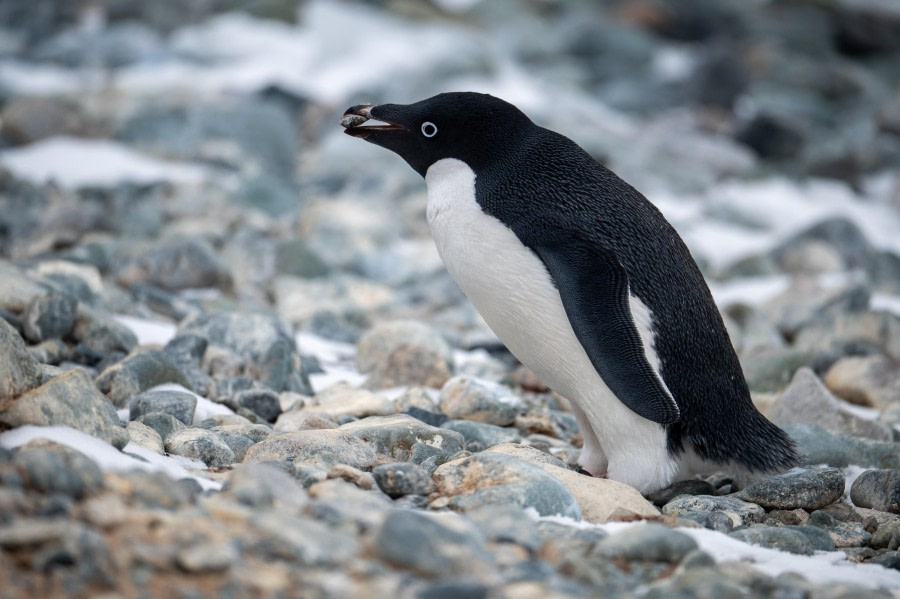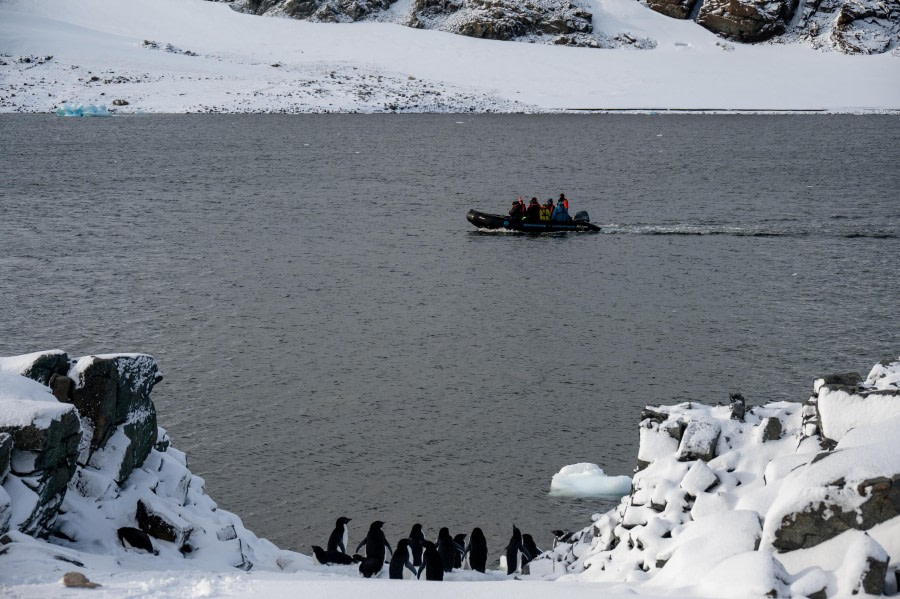The Ross Sea is a giant bay found south by south-east from New Zealand. Home of at least 10 species of mammal, 6 dozen species of birds, nearly a hundred types of fish, and around 1000 examples of invertebrate species. The Ross Sea is one of the few expanses of salt water that has been left (relatively) free of human impact.
Travellers to the Ross Sea are greeted by a massive geographical wonder – the Ross Ice Shelf. The shelf, roughly the size of France, is in fact part of a massive glacier that runs back onto the continent. The Shelf, referred to as the Ross Barrier by explorers like Shackleton and Scott, runs 700 km long at its northern end and towers 15-50 metres above the water.
Passengers aboard one of our Ross Sea Journeys will travel along the southern parts of the Antarctic Peninsula, Peter I Island, the Bellingshausen and Amundsen Seas into the Ross Sea. Visiting the Ross Ice-shelf, Dry Valleys, McMurdo Station, Campbell Island and the historic huts of discovery voyagers Scott and Shackleton. Ortelius will be equipped with helicopters. Be prepared for an unforgettable memory.

Currently we do not have any Ross Sea cruises available.
Video of Ross Sea expedition
Latest blog and customer story
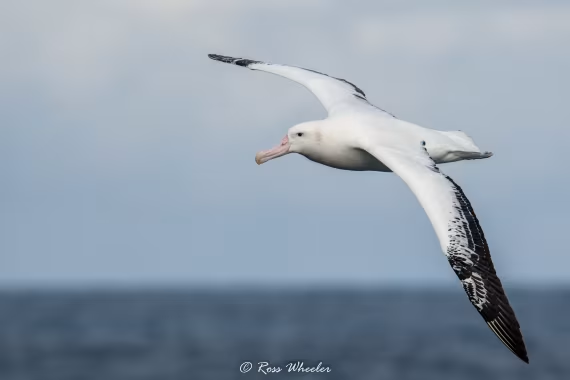
The Eight Albatrosses of Antarctica and the Sub-Antarctic
Whether you’re bound for Antarctica, the sub-Antarctic, or some combination of both, this entry will give you all the important albatross info as well as where these birds can best be found.

Explorers in the Ice - Ross Sea Antarctica
Although I’ve been to the Peninsula many times, the opportunity to experience the Ross Sea and its historical sites for the first time was very exciting.
Latest highlight and wildlife
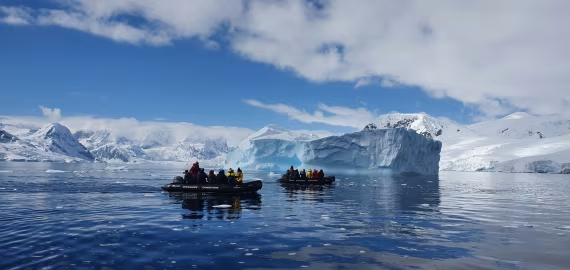
See the highlights you may experience:
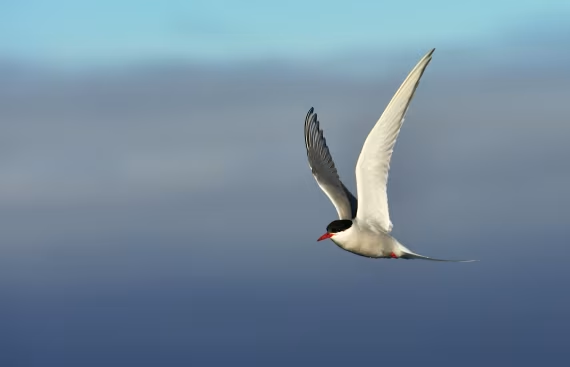
See the highlights you may experience:
Map of
Ross Sea photo
Ross Sea cruise reviews
Ross Sea FAQ
What is the Ross Sea voyage like?
The Ross Sea in Antarctica is one of the most remote places on Earth. Due to heavy pack-ice cover for the biggest part of the year it is off the beaten tourist track of Antarctica. Only the strongest ice-strengthened ships are able to penetrate this high-Antarctic region.
The rewards are obvious; the Ross Sea possesses an abundant Antarctic wildlife, amazing scenery and exceptional artefacts from historic Antarctic expeditions. Some of the highlights are: huge colonies of Emperor and Adélie Penguins, Mount Erebus, the Ross Ice-shelf, the Dry Valleys, McMurdo Station, Cape Evans (hut of Scott) and Cape Royds (hut of Shackleton).
What is the weather at Ross Sea like?
As the Ross Sea is under the direct influence of the harsh Antarctic continental climate, temperatures are on the average low, around 1ºC (34ºF). In February – March, at the end of the Austral summer, temperatures can even drop slightly below zero. Strong katabatic winds can occur at any time though and may have an influence on the programme.
Please note: pack-ice is formed in the Ross Sea early in the winter season and can stay there until late summer. Although we do expect to be able to penetrate into the Ross Sea, nature does not give us a guarantee. Pack-ice is unpredictable and may prevent our ships from completing the planned itinerary.
What to wear at the Ross Sea trip?
As it can be cold in the Ross Sea warm clothing is essential. Waterproof trousers and jacket against wind, rain and salt spray coming into the zodiac. Furthermore thermal underwear, fleece jackets, warm gloves and a warm hat are essential. Rubber-boots for the landings are also needed but are provided on board.
How do I get ashore at the Ross Sea?
There are no harbours in the Ross Sea. Landings are carried out by zodiac and helicopter.
Where is the Ross Sea Located and how big is it?
The Ross Sea is located between the Marie Bryd Land and Victoria Land in the Southern Ocean. This deep bay is part of the Antarctica region, and it is near the Amundsen Sea. During an expedition cruise to the Ross Sea, you will see several islands and land masses. New Zealand has placed a claim on all of this land. However, most of the non-Commonwealth nations do not recognize New Zealand’s claim to any of the land formations within the Ross Sea.
The Ross Sea is relatively shallow, and it accounts for up an area that is approximately 960,000 square km (370,000 square miles). In many areas, the Ross Sea does not extend down more than 300 meters (985 feet) to the sea floor, but the southwestern section reaches a depth of 914 meters (3,000 feet). New Zealand has placed a claim on all of this land. However, most of the non-Commonwealth nations do not recognize New Zealand’s claim to any of the land formations within the Ross Sea.
Who discovered the Ross Sea?
Captain James Clark Ross commanded the first two ships (HMS Erebus and HMS Terror) to enter the frigid waters of the Ross Sea. Though he did not succeed in his mission to reach the magnetic South Pole during this 1839 - 1843 expedition, he did chart the Ross Sea and discover the Ross Ice Shelf. You can see both of these amazing Antarctic attractions on our Ross Sea cruises, which include the use of helicopters.
Photo gallery
About
Ross Sea weather
While temperatures during the Antarctic winter months can drop as low as around -50°C, you can expect slightly more comfortable temperatures around -10°C - 0°C during your Ross Sea cruise.
If you’re wondering what clothing to bring, don’t worry, we have you covered. Follow this link and scroll about one third of the way down the page to get all sorts of clothing guidelines and tips.
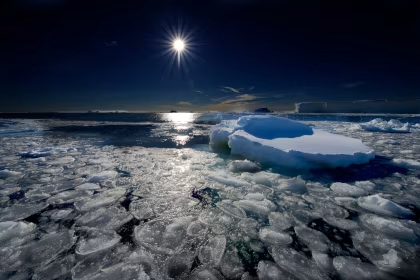
Facts about the Ross Sea
- A colossal squid measuring longer than 10 metres and weighing almost 500 kilograms was found in the Ross Sea in 2007.
- All the islands found within the limits of the Ross Sea have been claimed by New Zealand, although most countries don’t bother to recognise the claims.
- The Ross Ice Shelf is the largest such shelf on Earth. At approximately 472,000 km2 it is roughly the size of Spain. It soars anywhere between 15 and 60 metres high and extends nearly 800 kilometres along the shoreline.
- The Ross Sea is named after Captain James Clark Ross who mapped the area in the 1841.
- Since the Ross Sea is the open waterway closest to the actual South Pole it has become the launching spot of many exploration expeditions that went on to journey inland.
- The Ross Ice Shelf was the mother to what was quite possibly the biggest iceberg ever. The iceberg broke off of the shelf in the year 2000, measuring 295 km at its longest point and 37 km at its widest. Altogether it boasted a surface area of about 11,000 km2.
- Wildlife flourishes despite the harsh cold of the waters. Some of the fish found in the Ross Sea have antifreeze in their veins to keep them from freezing solid.
Travel to the Ross Sea
Travel to the Ross Sea and experience one of the most pristine untouched landscapes left in the world. Your Ross Sea expedition will be full of activities that let you take in the rugged and clean beauty of the area – hike the shores of Antarctica, visiti historical sites from the Golden Age of Exploration like the huts of explorers Shackleton and Scott, and enjoy unique helicopter flights to the Dry Valleys and the Ross Ice Shelf.
Your Ross Sea trip will also introduce you to a surprising abundance of wildlife. Go bird watching on the lookout for albatrosses and Petrels. Cruise along the shores in a Zodiac and say hello to seals and a variety of whales. Your Ross Sea holiday even lets you take helicopter rides to gain the maximum of everything in this spectacular place.
